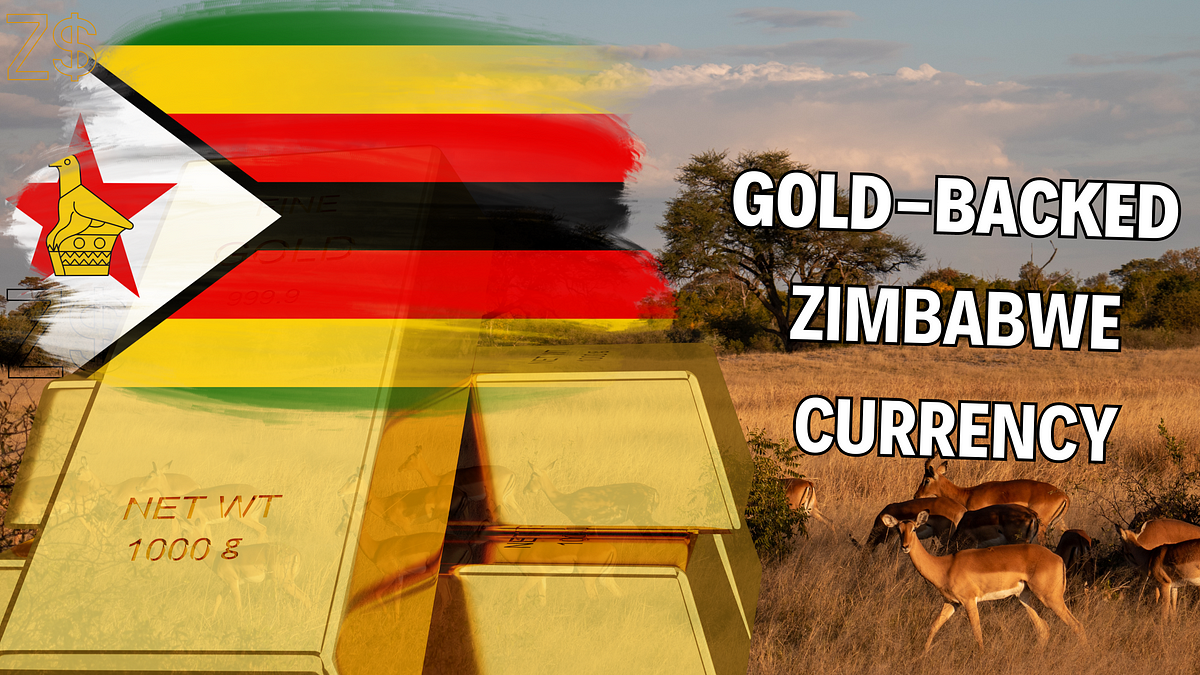
In a bold move to address the rampant inflation plaguing Zimbabwe’s economy, the government has announced the introduction of a new currency named Zim Gold (ZiG). This currency, backed by gold, precious minerals, and foreign currencies, is poised to circulate alongside other foreign currencies in an effort to stabilize the nation’s faltering economy.
John Mushayavanhu, the governor of Zimbabwe’s Reserve Bank, unveiled the new currency during a press conference held in the capital city of Harare on April 5, 2024. Mushayavanhu emphasized that the introduction of Zim Gold aims to tackle the sky-high inflation rates that have rendered the Zimbabwean dollar virtually worthless in recent times.
“The step has been taken to tackle sky-high inflation and stabilize the country’s weakening economy,” Mushayavanhu stated, addressing reporters. He outlined the backing of Zim Gold by gold reserves, precious minerals, and a basket of foreign currencies as a strategic move to instill confidence in the country’s monetary system.
Zimbabweans have been given a 21-day window to convert their old cash into the new Zim Gold currency, according to directives from the central bank. This transition period aims to facilitate a smooth transition for citizens as the country shifts to the new monetary framework.
The decision to introduce Zim Gold comes amid staggering depreciation of the outgoing Zimbabwean dollar, which has seen its value plummet against major currencies such as the US dollar. Over the past year alone, the Zimbabwean dollar has lost nearly 100 percent of its value against the USD, exacerbating economic hardships for citizens.
Prior to the introduction of Zim Gold, the official exchange rate stood at approximately 30,000 Zimbabwean dollars to one US dollar. However, on the black market, the exchange rate soared even higher, reaching a staggering 40,000 Zimbabwean dollars for a single US dollar.
The launch of Zim Gold represents a pivotal moment in Zimbabwe’s economic history, signalling a concerted effort by the government to regain control over inflation and restore stability to the country’s financial landscape. With its backing by tangible assets such as gold and foreign reserves, the new currency holds the promise of a more resilient and robust monetary system for Zimbabweans.
As the nation embarks on this new chapter in its economic journey, all eyes are on the performance of Zim Gold and its impact on the lives of ordinary citizens who have long grappled with the consequences of hyperinflation and currency instability.

Ensuring the success of Zim Gold (ZiG) as a tool to combat inflation and stabilize Zimbabwe’s economy requires a comprehensive approach addressing several key factors:
The government must ensure transparency in the management of the new currency, including the utilization of gold reserves and foreign currencies to back ZiG. Clear communication regarding monetary policies, exchange rates, and economic strategies is essential to build trust among citizens and investors.
The Reserve Bank of Zimbabwe (RBZ) needs to implement prudent monetary policies to maintain stability and control inflation. This includes monitoring money supply, interest rates, and exchange rates to prevent excessive inflation or deflation.
Promoting sustainable economic growth is crucial for the long-term success of ZiG. The government should focus on creating an enabling environment for investment, fostering entrepreneurship, and diversifying the economy beyond traditional sectors such as mining and agriculture.
Sound fiscal policies are essential to complement monetary measures. The government should prioritize fiscal discipline, including prudent budget management, reducing public debt, and curbing government spending to avoid inflationary pressures.
Addressing corruption is paramount to ensure the success of ZiG. Corruption undermines economic stability, erodes public trust, and hampers development efforts. Strong anti-corruption measures, enforcement of accountability, and promoting transparency are crucial to combat corruption effectively.
Confidence in the new currency is essential for its success. The government and central bank should actively work to build confidence among citizens, businesses, and investors through effective communication, stability measures, and consistent policy implementation.
Strengthening institutional capacity within the central bank and regulatory bodies is necessary to effectively manage ZiG and oversee financial markets. This includes enhancing governance structures, improving regulatory frameworks, and investing in staff training and development.
Enhancing financial inclusion can help broaden the base of currency users and stimulate economic activity. The government should prioritize initiatives to improve access to banking services, promote digital payments, and expand financial literacy programs across the population.
Engaging with international partners, multilateral organizations, and neighboring countries can provide valuable support and expertise in stabilizing the economy and managing ZiG. Collaboration on trade, investment, and financial assistance can contribute to sustainable economic development.
Flexibility and adaptability in responding to evolving economic conditions are crucial. The government should be prepared to adjust monetary and fiscal policies as needed to address emerging challenges and maintain stability in the face of external shocks or internal pressures.
By addressing these critical areas, Zimbabwe can increase the likelihood of success for Zim Gold as a tool to combat inflation and lay the foundation for sustained economic growth and stability in the years ahead.
Zimbabwe faced significant challenges with its previous currencies, particularly the Zimbabwean dollar, due to hyperinflation, economic mismanagement, political instability, and lack of confidence. Rampant corruption, unsustainable fiscal deficits, and poor governance exacerbated currency depreciation, leading to widespread loss of trust among citizens and investors. The economy’s overreliance on a few key sectors and external factors such as international sanctions further compounded currency instability. These factors combined to undermine the value and credibility of previous currencies, necessitating comprehensive reforms to restore economic stability and rebuild public confidence in the monetary system.
